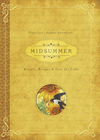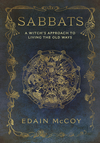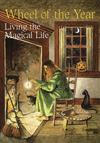Summer Solstice: The Season of Life, Light, and Love

The time is come for the season of life, light, and love—the time when the God gives way to the Goddess, when goodness reigns across the land and all morality celebrates the vibrance of creation and evolution.
Midway between Beltane and Samhain is the Summer Solstice, also known as Midsummer: the apex of the masculine solar energy in the wheel of the year. At the moment of the solstice the Sun has reached the point above the Earth's surface farthest north of the equator, and is neither waxing nor waning but at a standstill—as if the Sun itself were enjoying the moment, the peak experience, and resistant to declination. The Sun has reached the midpoint of the solar year, exactly opposite the Winter Solstice on the wheel. Daylight shines longer on this day than any other. Each day has been longer than the last since midwinter—and noticeably so since Ostara. The coming months will bring the decline of the solar energy as the days become shorter and the nights longer. In the coming months, the Goddess will once again reign and step before the God, just as the Moon eclipses the Sun and the darkness of midwinter will bring death and rebirth.
The Summer Solstice has been celebrated for thousands of years. Ancient calendric installations such as Stonehenge have tracked the arrival and departure of the Summer Solstice for more than six thousand years—two millennia before the appearance of the Celts in Europe. Standing stone circles of the Celtic islands were oriented to various seasonal quarter and cross-quarter days when constructed, and they remain in existence to this day. Many of these stone circles rest on hilltops in view of the eastern horizon, where the first light of the sabbat day, the first ray of sunlight, can be seen to shine upon the circle's headstone.
The tradition of honoring the peak of masculine energy—the peak of the Sun God's power and persuasion—and of celebrating such an auspicious day, has always included a bonfire. A huge fire with flames reaching twenty feet into the air could not be more appropriate as the symbol of power, masculinity, action, life, and change. The ancients often built the solstice bonfires on hilltops so that the fires could be seen for many miles throughout the land. In the time of the ancient Celts, the archdruid lit the fires at sunset on the night before the solstice. Upon seeing the flames of the archdruid's fire, the other druids around the countryside lit their fires, passing the message across the land that the Summer Solstice had arrived. For the next thirty-six hours—the night, the coming day, and the following night—the Celtic communities celebrated the solstice.
Ritual celebrations usually included jumping through the flames of the solstice bonfire. In some areas two fires burned side by side, and farm animals were driven between to banish any evil they might have acquired and to protect them in the coming months. Sometimes the children passed between the fires, as did the adults. In other locales, once the fire had burned and only glowing coals remained, the people celebrating the peak of the natural solar energies walked barefoot across the burning embers in rites of purification and protection.
In conjunction with seasonal events, the Celtic clan leaders would gather in a sweat house (a man-made cave constructed of stones in the side of a hill), where a fire was built within. Then, when the cave air was properly heated, the fire was extracted. The clan leaders would enter the cave and sweat, talk, and negotiate. The Celtic populace also used the sweat house at other times for healing and praying.
In the process of pulling the fire out of the sweat house, through the tiny cave-like opening, a pathway of glowing red embers was often left scattered in front of the cave entrance. In order to gain access, the clan leaders would walk or crawl across the fiery coals, thereby proving their worthiness to speak for their tribes.

About Daniel Pharr
Related Products



is subject to certain Terms and Conditions